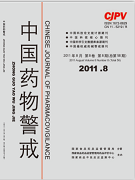|
|
An Investigation about the Clinical Application of Warfarin in 115 Patients
ZHANG Yu, YOU Peng-cheng, ZHENG Qiu-shan
2011, 8(9):
524-527.
Objective To investigate the clinical application of warfarin in patients of our hospital, summarize the experiences of its application, promote the rational use of warfarin. and probe the importance of the pharmaceutical care of warfarin. Methods 115 cases history of patients with warfarin in our hospital between 2009.1-2009.12 were consulted, to retrospectively analyze the indication, dosage, international normalized ratio(INR), hemorrhage event, and drugs used in combination with warfarin systematically. Results The common clinical indications for warfarin use were atrial fibrillation, deep vein thrombosis, cardiac pacemaker and venous stenting et al. The dosage of Warfarin used in patients was between 0.625-7.5mg. The average daily dosage was 2.45±0.81mg. The INR fluctuated between 0.92-7.01. The patients with INR<1.5 accounted for 33.0%, the cases with INR between 1.5-3.0 accounted for 44.3%, and the cases with INR>3.0 accounted for 22.6%. The hemorrhage events happened in patients with warfarin were hematuria, cerebral hemorrhage and psoas hemorrhage. Its incidence was 25.2%. The cases with hemorrhage commonly took warfarin combined with other drugs, such as anticoagulant drugs, Chinese patent medicines, antibacterials, gastric mucosal protective drugs. Conclusion At present, the clinical application of warfarin is still deficient. It is significant to develop the pharmaceutical care of warfarin activelic. The clinical pharmacists and physicians should make a concerted effort to build a safe, ecnomy and effective medication system for warfarin application.
References |
Related Articles |
Metrics
|
